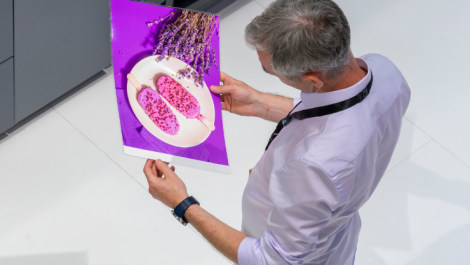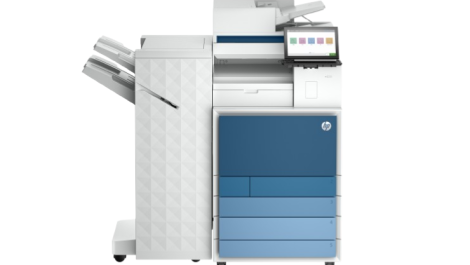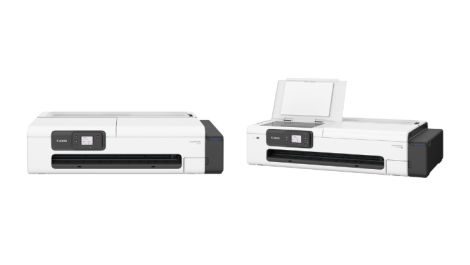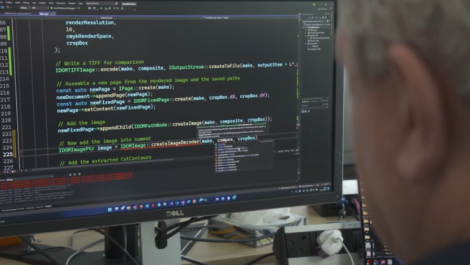Paper handling for continuous feed digital printing and finishing is what the Hunkeler show is all about.
For those engaged in high speed digital printing, the Hunkeler Innovationdays event, held every two years in Lucerne, Switzerland, has become an important staging post on the technology development highway. In 2013, this has been true again.
While there were no major new inkjet web printing presses unveiled – rather, improved versions or variations on existing technology – there was something arguably more important, and that from the host company itself. It had promised the next generation of its Printer Online Paper Processing (or POPP) technology, and it duly delivered. POPP8, comprising the UW8 unwinding module and RW8 rewinding module was shown as a technology demonstration.
‘Customers want to run faster, and this is the answer – speeds of more than 300 metres per minute,’ said Philipp Fritschi, Hunkeler’s head of marketing communications. ‘It is very powerful and more automated. Users can change the reel in two and half minutes, whereas on version 7 that was about eight minutes.’
To be exact, the rated fastest speed of POPP8 is 305 metres per minute. It has a web width of up to 30 inches (762 mm).Further improvements from POPP7 to POPP8 include the capability to handle heavier paper reels, weighing as much as 1500 kilogrammes, and also heavier paper grammages, now up to 350 gsm. Mr Fritschi commented that this could see the technology used in the packaging market, as well as the more traditional publishing, direct mail and transactional markets. POPP8 also has a symmetrical design, so that the modules can be run in-line with digital print engines on either the left or right side.
POPP8 was not Hunkeler’s only innovation at its home event however. It showed a new robotic system (manufactured by Bachmann Engineering) on its 5000 books per hour book line, taking book blocks from the end of the line and placing them on a high capacity stacker. The book line itself has actually just been purchased by Ashford Colour Press, no doubt to use with the HP T230 inkjet web press that it has just invested in to produce colour and mono books.
There was also the HL6 laser punching module, which was shown at drupa as a demonstration unit. This operates without any physical dies or perforation equipment, but instead uses lasers to dynamically punch a range of simple and complex security features and customised perforation patterns. It does so at impressive speeds of 150 metres per minute in 1-up and 2-up modes, and can be integrated into any Hunkeler configuration.
Elsewhere, there were announcements from Kodak and Xerox on the first day of the event; Kodak that it had launched a new Prosper press, the 5000XLi, with new press monitoring technology called the Intelligent Print System (IPS), which uses in-line video monitoring and advanced software controls to enable real-time adjustments that refine and optimise colour quality; Xerox with a new single engine configuration of its CiPress waterless inkjet web press, which was running a narrow web at the show.
While Xerox made a formal announcement regarding its single engine duplex CiPress waterless inkjet web, there was another new press on its booth. This is a variant of its iGen technology. The press is called the Color 8250, and its place is seen as filling a gap for those companies printing with mono and highlight colour cut sheet systems who are experiencing growing demand for colour direct mail and transactional work, but without the volume yet to contemplate an inkjet web press investment. To fall into line with the transactional market, where ink coverage is generally low, it will be sold on a ‘toner out’ model, where users pay a maintenance fee and then consumables costs, rather than a click charge.
Xerox’s Kevin O’Donnell explained further: ‘The other market for it is providing a back-up or short run opportunity for bigger lines. You might be doing a run of a million statements, and 5% might be different or special, so you can print them on the 8250 without having to interrupt the big inkjet line.’
He also said that Xerox’s representation of Impika inkjet presses would soon begin to take off in the UK, allowing it to be ‘more consultative’ in respect of the advantages or disadvantages of water-based or waterless inkjet.
Horizon’s finishing technology was prominent at the show and was responsible for finishing much of the printed output being produced. A visit to its booth revealed a new PUR binder, the single clamp BQ-280, which has been built specifically for PUR, as opposed to being modified for the process. The 500 cycles per hour machine uses new techniques for spine preparation and glue application, giving a better quality bind. Also new were the HT-1000V variable trimmer and the HOF-400 high speed feeder, while the drupa-previewed CRF-362 creaser/folder is now launched.
Italian manufacturer Meccanotecnica was showing its Universe thread sewing technology for the first time, sold in the UK by Kolbus. The manufacturer said this technology produces a stronger bind than perfect binding and has better layflat properties. Halstan Printing Group in Amersham has just installed the UK’s first such system.
Without exception, the exhibitors at Hunkeler spoke in glowing terms about the quality of visitor that was coming to their booths. They were the decision makers and the real production experts with a zeroed-in focus on high speed digital printing across transactional, direct mail and publishing sectors. The value to visitors of a show where every technology supplier that counts is within a single hall is therefore obvious.





